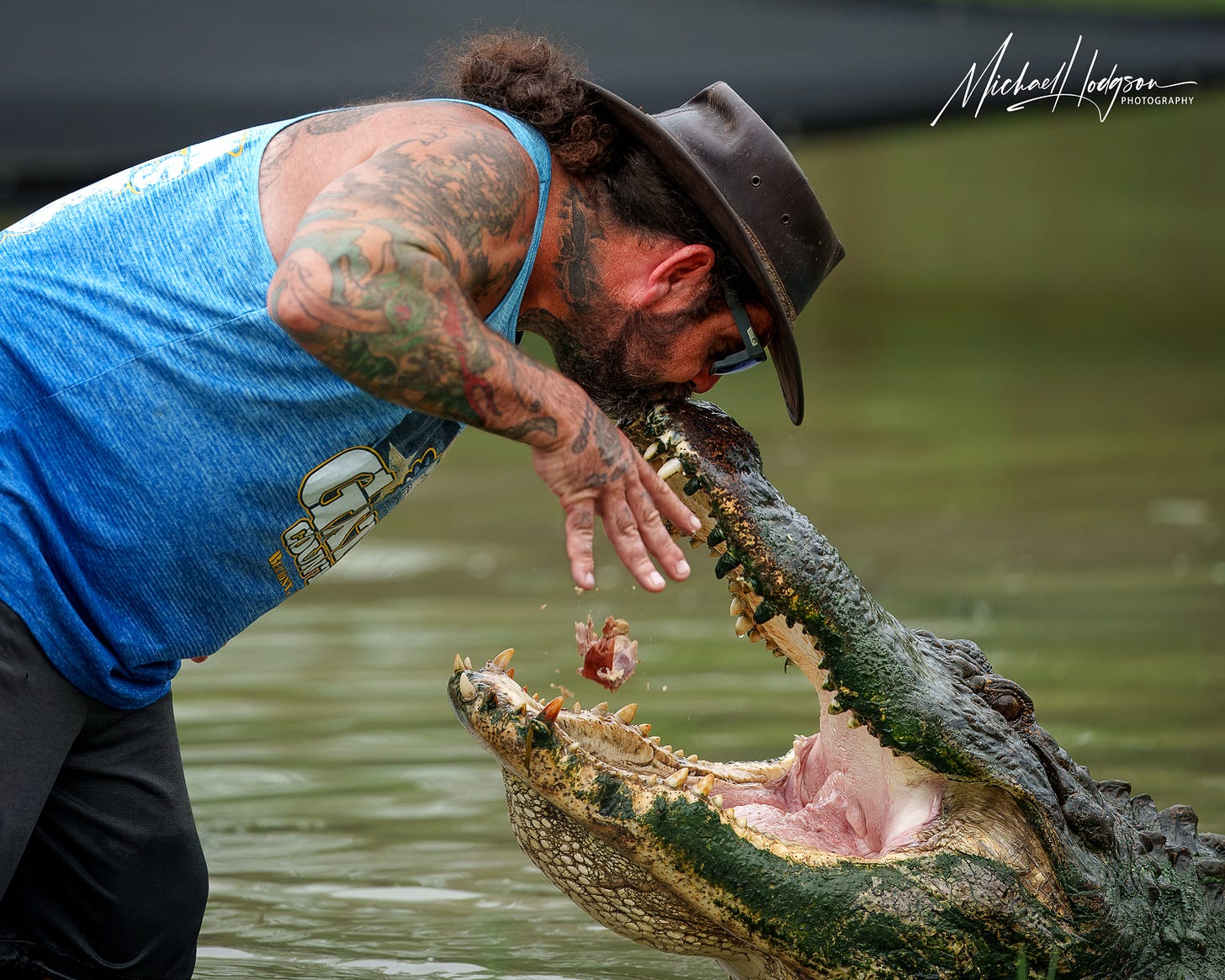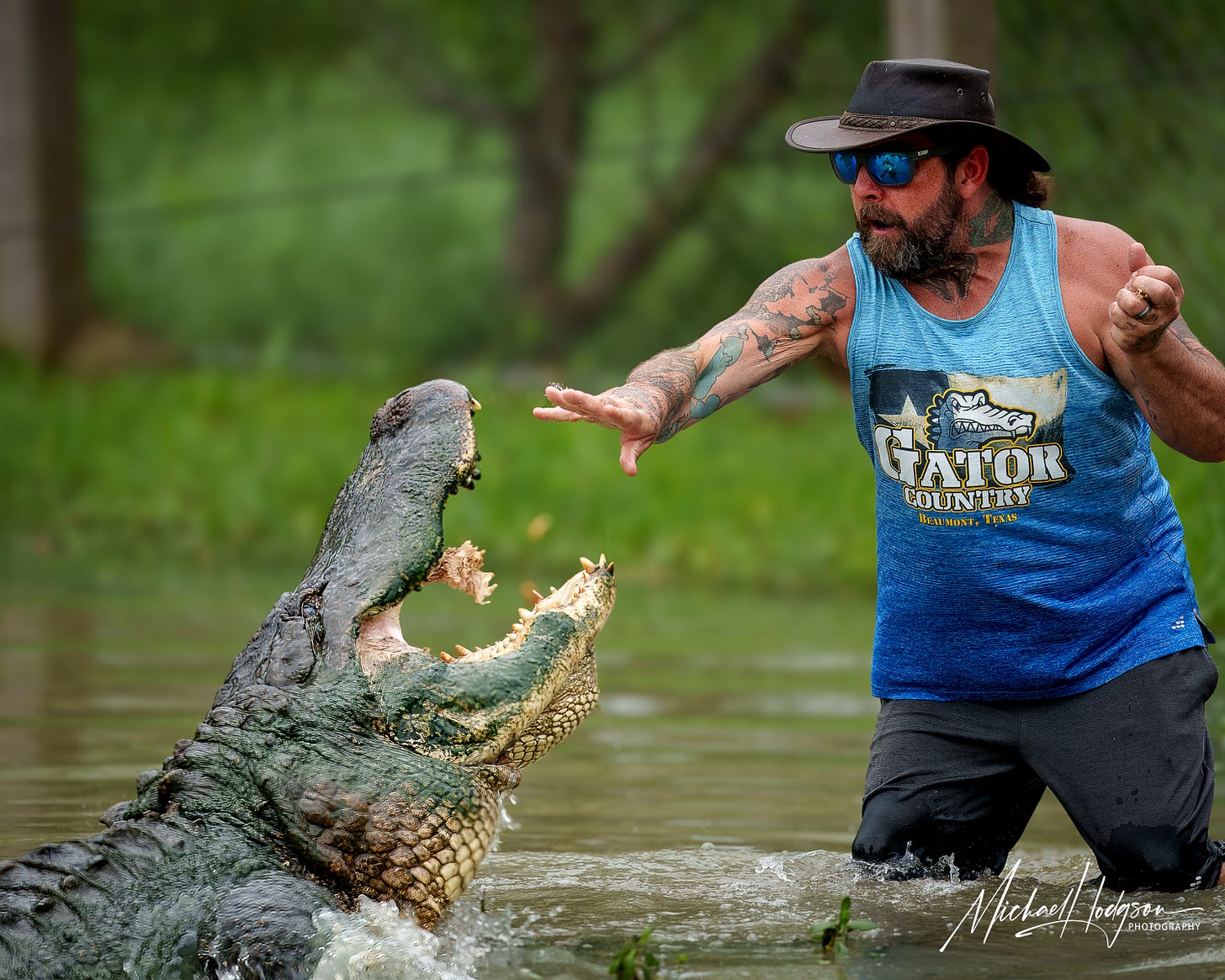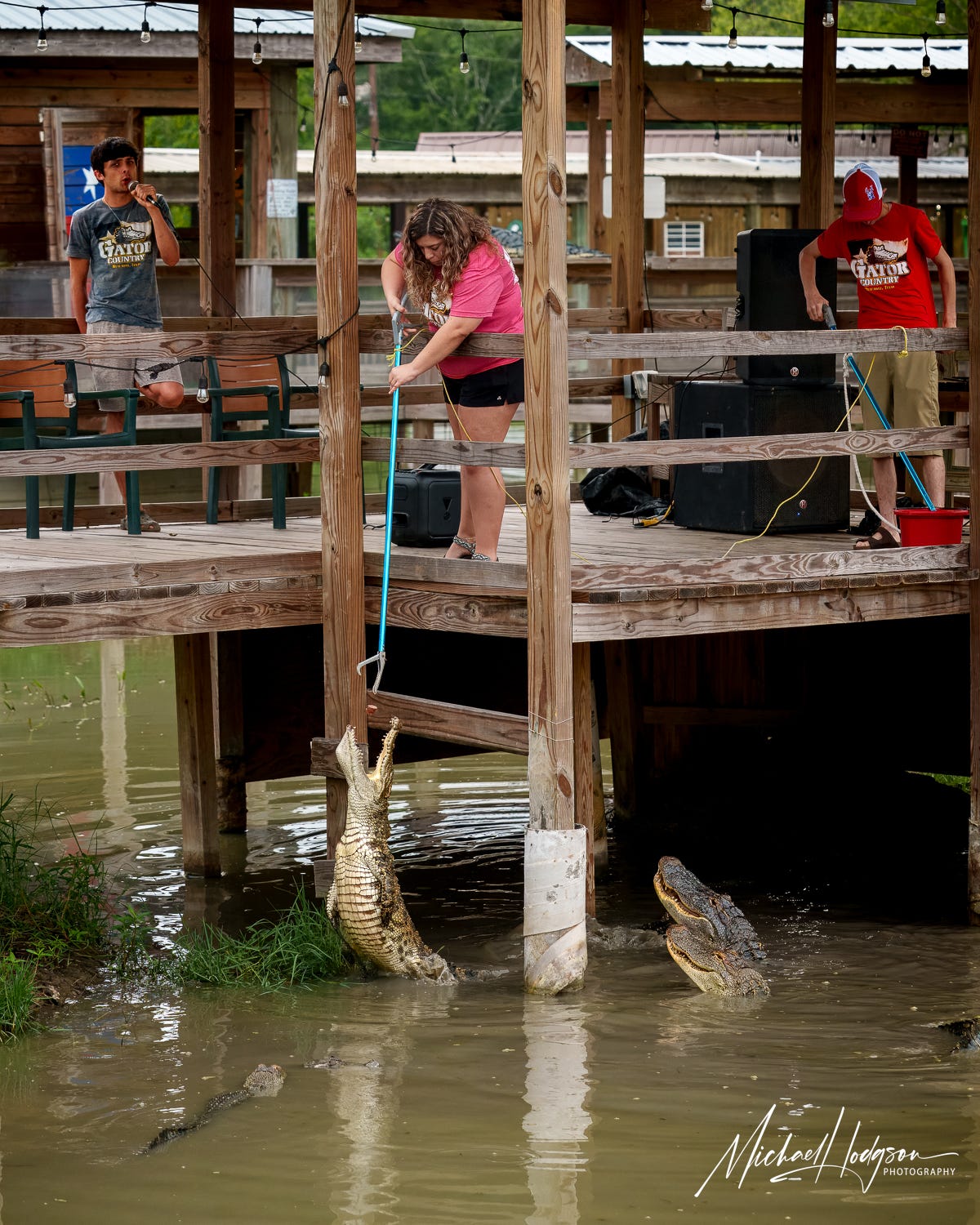Kissing an alligator, especially one that measures over 13 feet and is more likely to bite than to welcome a smooch, isn’t something I’ve ever dreamed of attempting! That’s not true for Arlie Hammonds, gator whisperer and co-owner of Gator Country in Beaumont, Texas. He relishes kissing Big Al on the snout during the park’s many gator feedings and educational shows.

As a photojournalist and wildlife photographer, I don’t usually feel inclined to visit wildlife theme parks with their artificial petting and feeding areas. However, I made an exception to venture into Gator Country, mainly because it promotes itself as a sanctuary for rescued or abandoned alligators that are either injured or classified as “nuisance gators.”
Enclosed by a tall, fenced boundary (to keep the alligators in, rather than to keep humans out), Gator Country is currently home to approximately 450 alligators, crocodiles, and various other reptiles that find their way to the sanctuary through rescue, donation, abandonment, or from other institutions that can no longer manage them.
The park’s two main attractions are the previously mentioned Big Al and Big Tex. Big Al, who turned 93 in 2025 and weighs over 1,000 pounds, was the largest alligator at Gator Country until Big Tex arrived in 2016. Big Tex holds the national record for the largest live-captured “nuisance” alligator, measuring 13 feet 8 inches and weighing 900 pounds when he was captured in Champion Lake. Big Tex now weighs over 1,100 pounds and is officially recognized as the largest alligator in captivity in the United States.
The interns and staff at Gator Country work hard to provide essential biology and reptile behavior lessons to all visitors through personalized interactions in the indoor exhibit, throughout the park, and during the feeding shows at the outdoor stage. A key message that is frequently repeated? Never feed alligators. In addition to being a federal offense, feeding an alligator makes it accustomed to humans. That makes an alligator potentially very dangerous and, once captured, it can never be returned to the wild.
Capturing the kiss in a photo
During my visit, at the end of one of the feeding shows, Arlie got into the water with Big Al to feed him by hand. I sensed something magical might happen, so I positioned myself where I could easily see Arlie’s profile while looking into Big Al’s giant mouth as he opened wide to receive bits of chicken he was being fed.

Looking through the viewfinder, I could see Big Al’s massive head looming in the foreground, his eyes locked onto Arlie. Arlie leaned in, holding a piece of chicken close to his body and just inches from Big Al’s gaping jaws. There was a split second where time seemed to stand still. Then, Arlie leaned over and kissed the gator’s rough, ancient snout as he tossed the chicken into Big Al’s gullet. I pressed the shutter and smiled.
As I reviewed the shot later on my computer, I realized I had captured a special moment that embodied everything Gator Country represents: respect, trust, and the deep bond between these rescued creatures and the people who dedicate their lives to saving them.
Camera: Sony A1
Lens: Sony FE 300mm F/2.8
Shutter speed: 1/2000th
Aperture: f/2.8
ISO: 500
— Story by Michael Hodgson – Enjoy more photos by Michael Hodgson – Fine Art prints are available for gifts or your home or office walls! Substack Free subscribers always receive 25% off. Paid subscribers enjoy a 50% discount. For more photography tips, visit our HI Travel Tales Photography website.




